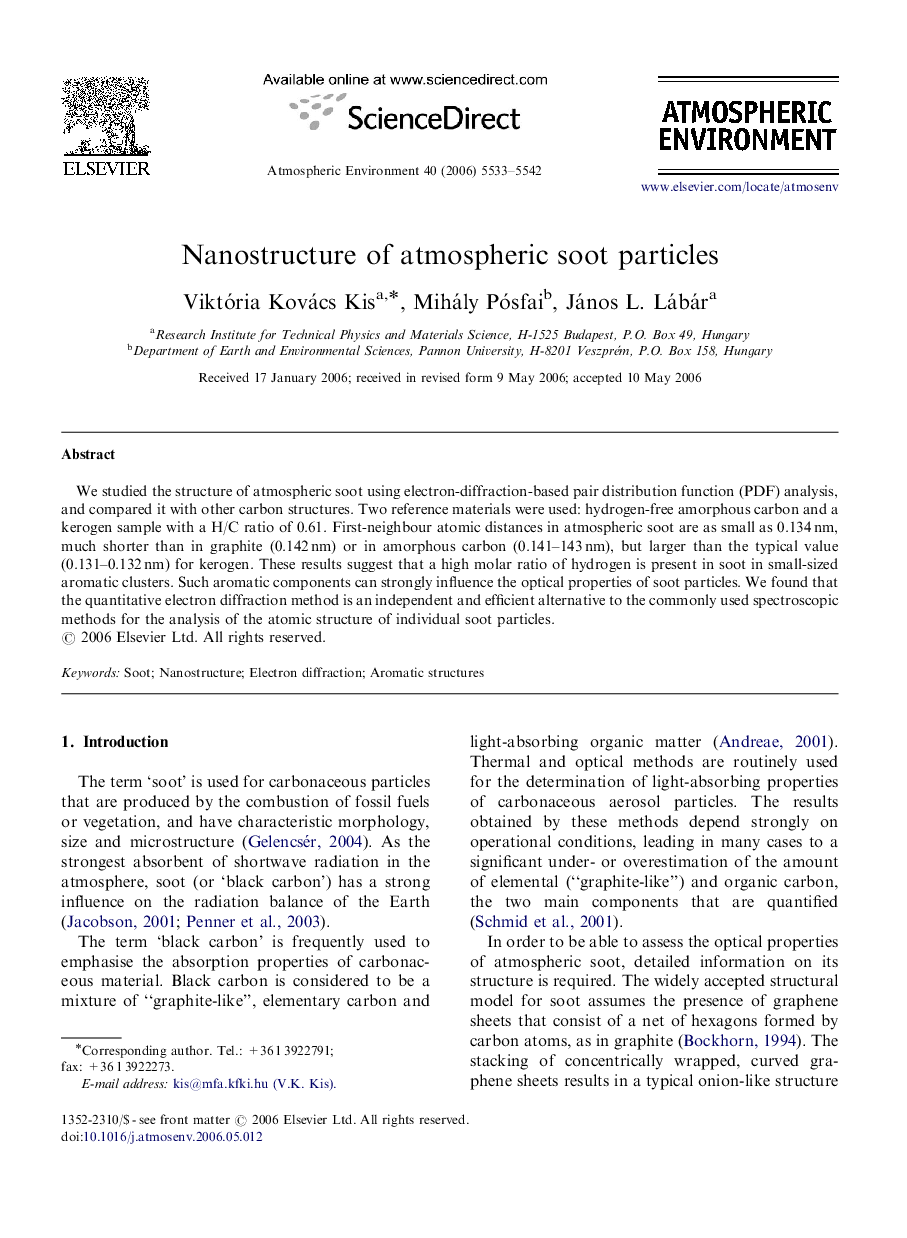| Article ID | Journal | Published Year | Pages | File Type |
|---|---|---|---|---|
| 4444358 | Atmospheric Environment | 2006 | 10 Pages |
We studied the structure of atmospheric soot using electron-diffraction-based pair distribution function (PDF) analysis, and compared it with other carbon structures. Two reference materials were used: hydrogen-free amorphous carbon and a kerogen sample with a H/C ratio of 0.61. First-neighbour atomic distances in atmospheric soot are as small as 0.134 nm, much shorter than in graphite (0.142 nm) or in amorphous carbon (0.141–143 nm), but larger than the typical value (0.131–0.132 nm) for kerogen. These results suggest that a high molar ratio of hydrogen is present in soot in small-sized aromatic clusters. Such aromatic components can strongly influence the optical properties of soot particles. We found that the quantitative electron diffraction method is an independent and efficient alternative to the commonly used spectroscopic methods for the analysis of the atomic structure of individual soot particles.
